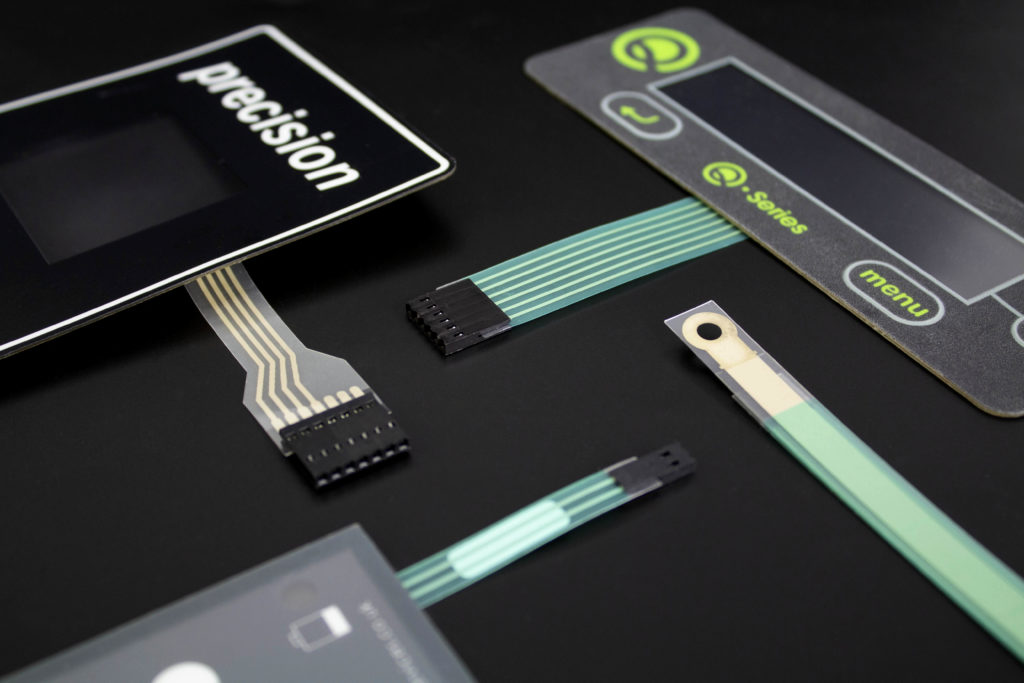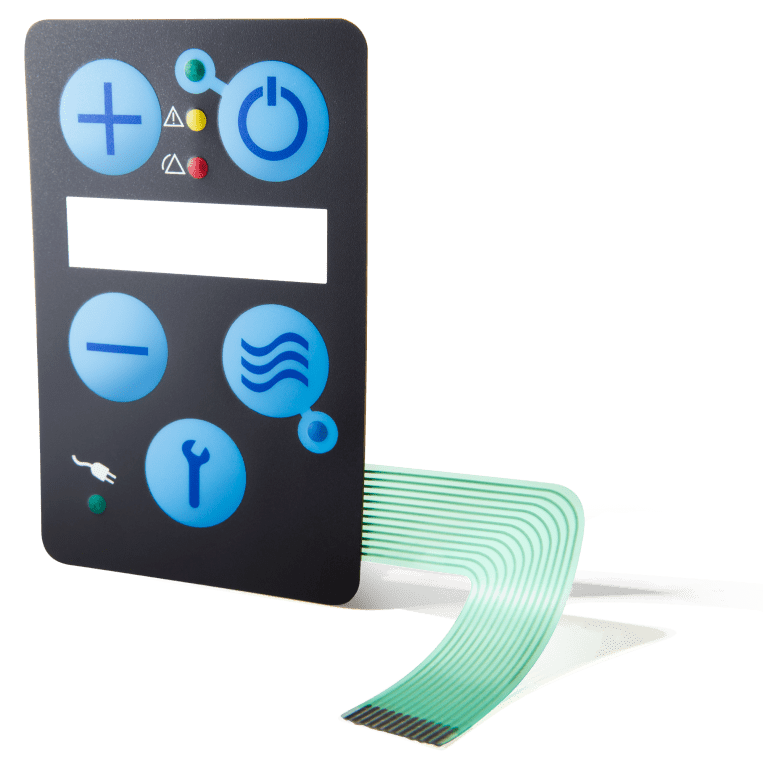Top Applications for Membrane Switches in Consumer Electronics
Top Applications for Membrane Switches in Consumer Electronics
Blog Article
Comprehending the Importance of Membrane Switches in Customer Interfaces
Membrane switches are indispensable components in the design of efficient customer interfaces, facilitating not only performance yet also improving visual allure and customer communication. As we discover the future fads and different benefits connected with Membrane technology, it becomes clear that these buttons are a lot more than simply components; they represent a convergence of development and usefulness.
What Are Membrane Buttons?

The spacer layer, which contains adhesive residential properties, permits the separation of the circuit layer from the overlay, making sure that the button remains in a non-activated state till pushed. When stress is related to the overlay, it presses the spacer layer, connecting the gap and completing the circuit in the underlying layer. This layout not only reduces the physical space needed for typical mechanical switches yet additionally boosts the toughness of the tool, as Membrane switches are generally resistant to dirt, dampness, and various other environmental variables.
Typically discovered in applications varying from consumer electronic devices to clinical tools, Membrane buttons are essential to modern-day innovation, giving a effective and user-friendly user interface that aligns with modern design demands.
Advantages of Membrane Buttons
While numerous switch innovations exist, Membrane Switches offer unique benefits that make them specifically preferable in numerous applications. Among the key advantages of Membrane switches is their small style, which allows for space-saving applications in gadgets where property is limited. Their thin account not just improves aesthetic appeal yet likewise helps with light-weight building and construction.
An additional substantial advantage is their resistance to environmental factors. Membrane switches are typically secured versus dampness, dirt, and impurities, making them suitable for usage sought after atmospheres, such as medical tools and commercial devices. This longevity expands the life expectancy of the button, lowering upkeep expenses and enhancing integrity.
Furthermore, Membrane switches can be tailored to satisfy specific design needs, incorporating special graphics and colors that boost customer communication. Their tactile responses choices can additionally be tailored to give a rewarding individual experience. Furthermore, Membrane switches are affordable, especially in high-volume applications, as they can be created efficiently.
Applications in Different Industries

In the consumer electronic devices sector, Membrane buttons prevail in devices such as microwaves, cleaning makers, and remotes. Their tactile responses and aesthetic choices improve customer experience while providing a sleek, modern-day appearance. In addition, automotive producers utilize Membrane switches in dashboard controls and infomercial systems, where space is limited, and user engagement is vital.
Moreover, the industrial sector leverages Membrane buttons in control panels for machinery and devices, enabling intuitive procedure in usually severe environments. Their resistance to chemicals and moisture guarantees longevity and integrity in these applications. Generally, the adaptability of Membrane Switches adds significantly to their prevalent usage, making them essential in numerous technological domain names.
Design Factors To Consider for Membrane Buttons

When developing Membrane buttons, numerous key considerations have to be taken into consideration to ensure optimal capability and customer experience. To start with, the selection of products is vital; selecting durable, high-grade substrates can enhance the button's longevity and resistance to environmental variables such as dampness and temperature level changes.
Secondly, the design of the graphic overlay should focus on clarity and ease of usage. Symbols and message have to be legible, and the format needs to facilitate intuitive interaction (membrane switches). Additionally, responsive comments is vital; incorporating a responsive dome or various other devices can improve the customer experience by supplying physical confirmation of activation
One more essential factor is the button's electric efficiency. Designers need to guarantee that the conductive traces are appropriately designed to reduce resistance and avoid signal interference. This includes evaluating the needed actuation pressure and ensuring compatibility with the electronic parts they will user interface with.

Future Fads in Membrane Technology
As technology remains to advance, Membrane switches are positioned to advance substantially, driven by innovations in materials and producing strategies. One emerging fad is the consolidation of advanced products, such as conductive inks and flexible substrates, which boost toughness and lower the total weight of Membrane switches. These materials not only boost the tactile feedback however also enable for the design of switches that can endure harsher environmental conditions.
Moreover, the integration of touch-sensitive technologies is transforming typical Membrane Switches into more interactive interface. Capacitive touch sensing units embedded within Membrane switch panels can offer an extra instinctive and responsive customer experience, aligning with the expanding need for streamlined, contemporary designs in consumer electronics.
Furthermore, look here advancements in printing techniques, such as digital and 3D printing, allow fast prototyping and customization of Membrane buttons. This adaptability permits suppliers to read more react quicker to market demands and consumer preferences.
Lastly, sustainability is coming to be a considerable focus, with producers checking out eco-friendly materials and procedures. As these fads unfold, the future of Membrane innovation promises enhanced performance, aesthetic allure, and environmental duty, solidifying their role in sophisticated interface throughout various sectors.
Final Thought
In verdict, Membrane Switches represent a crucial component in the layout of user interfaces, incorporating functionality with visual flexibility. As improvements in technology proceed, the evolution of Membrane buttons is expected to more refine individual interfaces, driving innovation and enhancing use in a progressively intricate technological landscape.
Membrane buttons are integral elements in the layout of reliable user interfaces, assisting in not only capability but likewise boosting visual appeal and individual communication.Membrane Switches serve as an important element in numerous user interfaces, helping with a seamless communication between users and electronic gadgets.While countless button technologies exist, Membrane Switches offer unique benefits that make them specifically preferable in various applications.Furthermore, Membrane switches can be personalized to satisfy particular design see here now needs, integrating distinct graphics and colors that boost customer interaction.In verdict, Membrane Switches represent an important part in the layout of individual interfaces, incorporating performance with aesthetic versatility.
Report this page